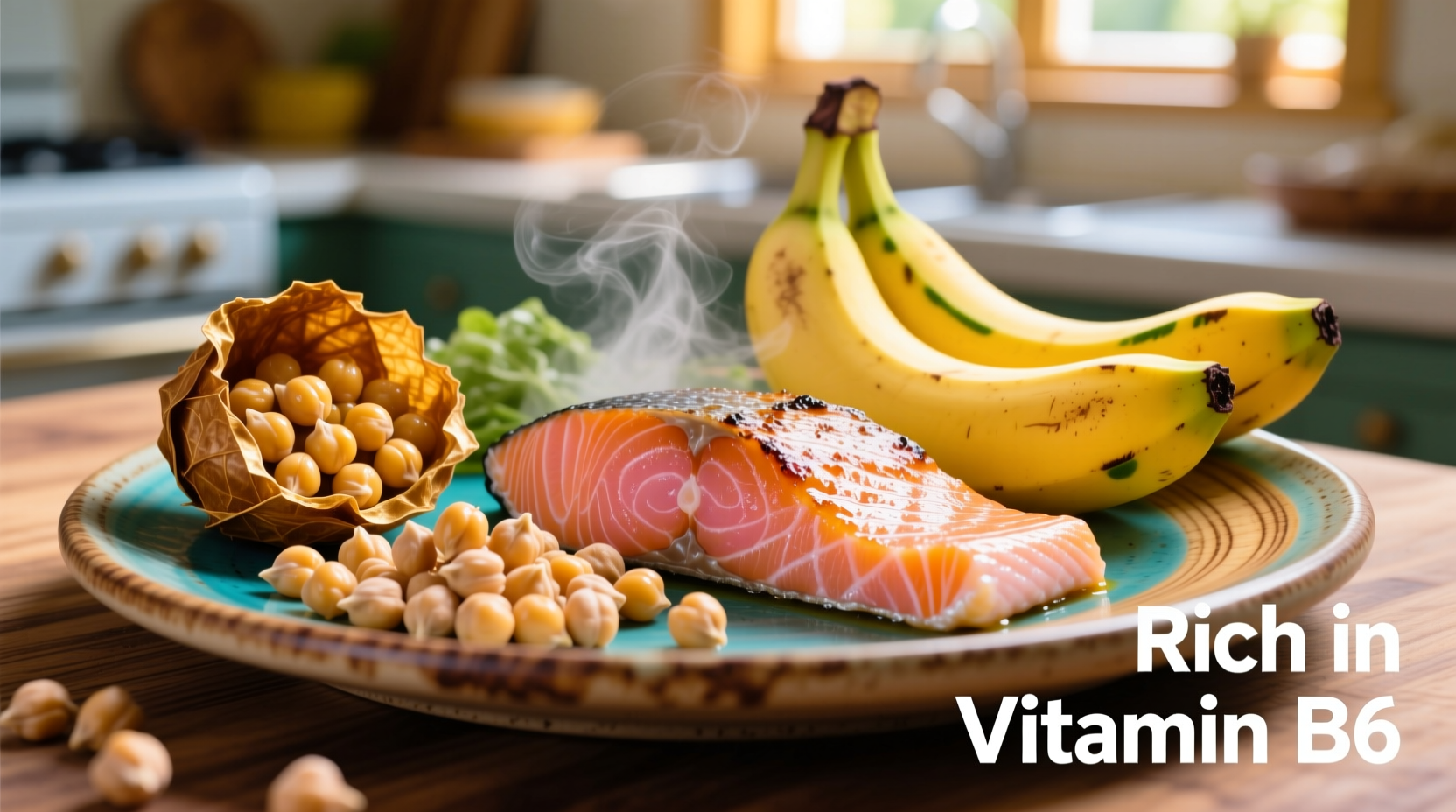Getting enough vitamin B6 isn't just about preventing deficiency—it's crucial for maintaining optimal brain function, supporting immune health, and regulating mood through neurotransmitter production. Unlike some vitamins, your body doesn't store B6 long-term, making regular dietary intake essential for sustained energy and cognitive performance.
Why Vitamin B6 Matters More Than You Think
Vitamin B6 plays a surprisingly diverse role in your health beyond basic nutrition. Recent research from the National Institutes of Health shows it helps regulate homocysteine levels, which when elevated, may increase cardiovascular disease risk. It's also involved in creating hemoglobin, the protein that carries oxygen in red blood cells—critical for preventing anemia.
What many people don't realize is that B6 works synergistically with other B vitamins. For optimal absorption and utilization, it needs adequate levels of magnesium and other B-complex vitamins. This explains why isolated B6 supplements often don't deliver the same benefits as getting B6 from whole food sources that naturally contain these complementary nutrients.
Complete Guide to B6-Rich Foods
Understanding which foods contain significant amounts of vitamin B6 requires looking beyond simple lists. The bioavailability—the amount your body can actually use—varies significantly between food sources. Animal proteins generally offer higher bioavailability (70-90%) compared to plant sources (50-75%), though plant sources often come packaged with additional fiber and phytonutrients.
| Food Source | Serving Size | Vitamin B6 Content (mg) | % Daily Value |
|---|---|---|---|
| Chickpeas (cooked) | 1 cup | 1.1 | 65% |
| Tuna (yellowfin, cooked) | 3 ounces | 0.9 | 53% |
| Salmon (cooked) | 3 ounces | 0.6 | 35% |
| Chicken breast (cooked) | 3 ounces | 0.5 | 29% |
| Potato with skin (baked) | 1 medium | 0.4 | 24% |
| Beef liver (cooked) | 3 ounces | 0.5 | 29% |
| Sunflower seeds | 1/4 cup | 0.4 | 24% |
| Banana | 1 medium | 0.4 | 24% |
Practical Incorporation Strategies
Simply knowing which foods contain B6 isn't enough—you need practical ways to include them in your daily meals. The key is understanding how cooking methods affect B6 retention. Unlike some vitamins, B6 is water-soluble and can leach into cooking water, but it's relatively heat-stable.
For maximum retention:
- Steam vegetables instead of boiling to prevent nutrient loss
- Use cooking liquids from potatoes or chickpeas in soups and sauces
- Pair B6-rich foods with vitamin C sources (like bell peppers with chicken) to enhance absorption
- Include raw sources like bananas and avocados in your diet

Special Considerations for Different Needs
Your B6 requirements aren't static—they change based on life stage, health status, and dietary patterns. The National Academies of Sciences, Engineering, and Medicine provides specific recommendations:
Context Boundaries: While the general adult RDA is 1.3 mg, certain situations increase needs significantly:
- Pregnant women need 1.9 mg daily to support fetal brain development
- Nursing mothers require 2.0 mg to maintain their own levels while providing for their baby
- People taking certain medications (like isoniazid for tuberculosis) may need up to 25-50 mg daily under medical supervision
- Vegetarians and vegans should focus on chickpeas, sunflower seeds, and fortified cereals as primary sources
It's important to note that while deficiency is uncommon in developed countries, certain populations face higher risks. Older adults often have reduced absorption, and people with autoimmune disorders like rheumatoid arthritis may have increased requirements. The CDC's National Health and Nutrition Examination Survey data shows that approximately 10% of Americans have marginal B6 status, particularly among older adults.
Common Misconceptions About Vitamin B6
Several myths persist about vitamin B6 that can lead to poor dietary choices:
Myth: You need supplements to get enough B6
Reality: Most people easily meet requirements through diet alone. The NIH reports that deficiency affects less than 10% of the general population in the US.
Myth: More B6 is always better
Reality: Consuming more than 100 mg daily long-term can cause nerve damage. The tolerable upper intake level for adults is 100 mg, but food sources rarely provide problematic amounts.
Myth: All plant sources of B6 are equally effective
Reality: Bioavailability varies—chickpeas offer better absorption than many other plant sources due to their complementary nutrient profile.
Creating a Balanced B6-Rich Meal Plan
Instead of focusing on single superfoods, build meals that combine multiple B6 sources for optimal absorption and overall nutrition. Try these combinations:
- Breakfast: Oatmeal topped with banana slices and sunflower seeds (0.7 mg total)
- Lunch: Chickpea salad with grilled chicken, bell peppers, and spinach (1.6 mg total)
- Dinner: Baked salmon with roasted potatoes and asparagus (1.5 mg total)
This sample day provides approximately 3.8 mg of vitamin B6—well above requirements while delivering a spectrum of complementary nutrients. The key is variety: rotating different protein sources and colorful vegetables ensures you're getting B6 in its most bioavailable forms alongside other essential nutrients.
When to Consider Professional Guidance
While most people can meet B6 needs through diet, certain situations warrant consulting a healthcare provider:
- Persistent symptoms like confusion, depression, or weakened immunity despite good dietary intake
- Following restrictive diets (vegan, elimination diets) long-term
- Taking medications known to interfere with B6 metabolism
- Planning pregnancy or currently pregnant/nursing
A registered dietitian can help create a personalized plan that addresses your specific needs while ensuring you're getting B6 in the most effective forms for your body. Remember that optimal nutrition comes from food synergy—getting nutrients in their natural combinations rather than isolation.











 浙公网安备
33010002000092号
浙公网安备
33010002000092号 浙B2-20120091-4
浙B2-20120091-4